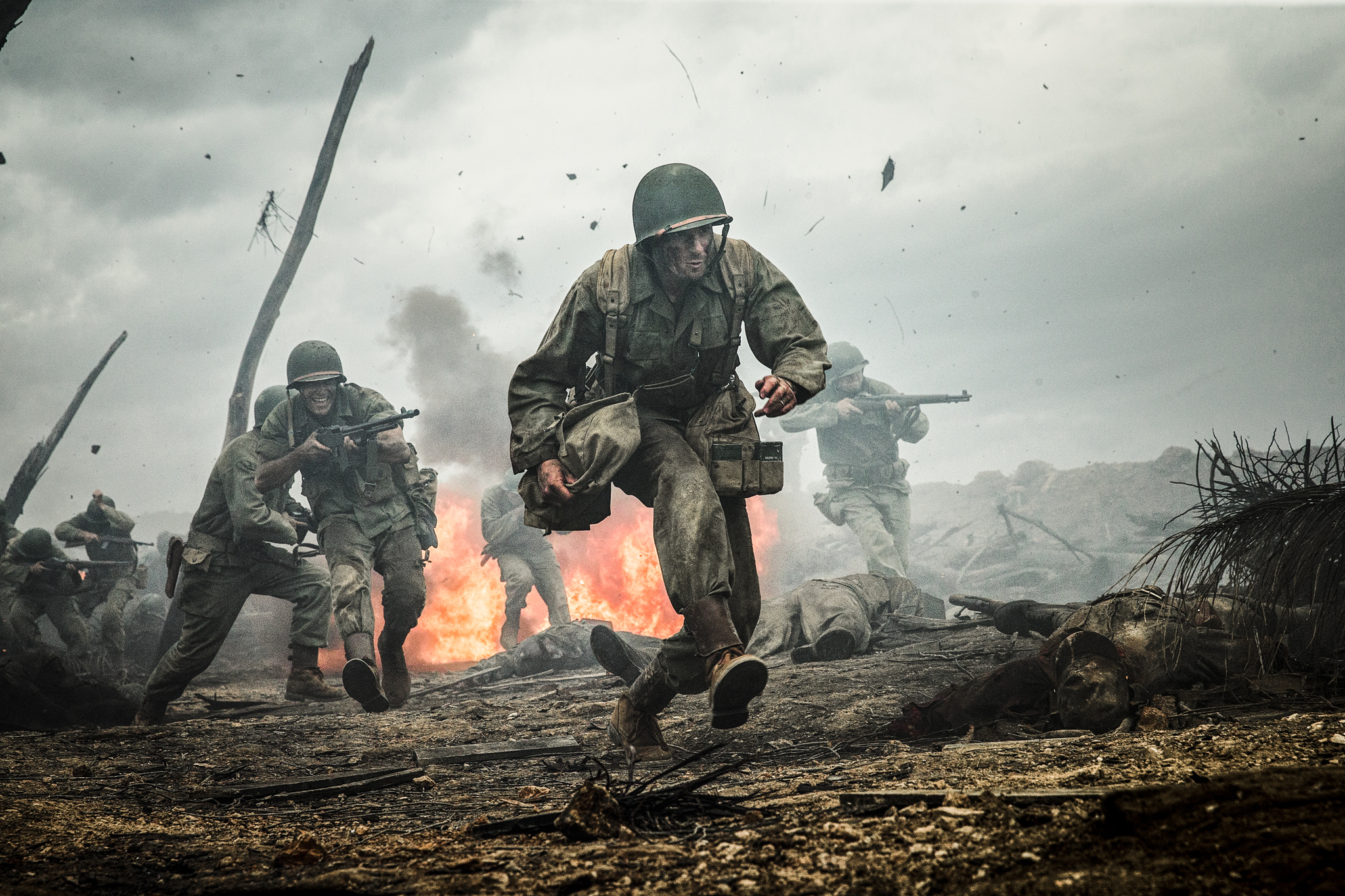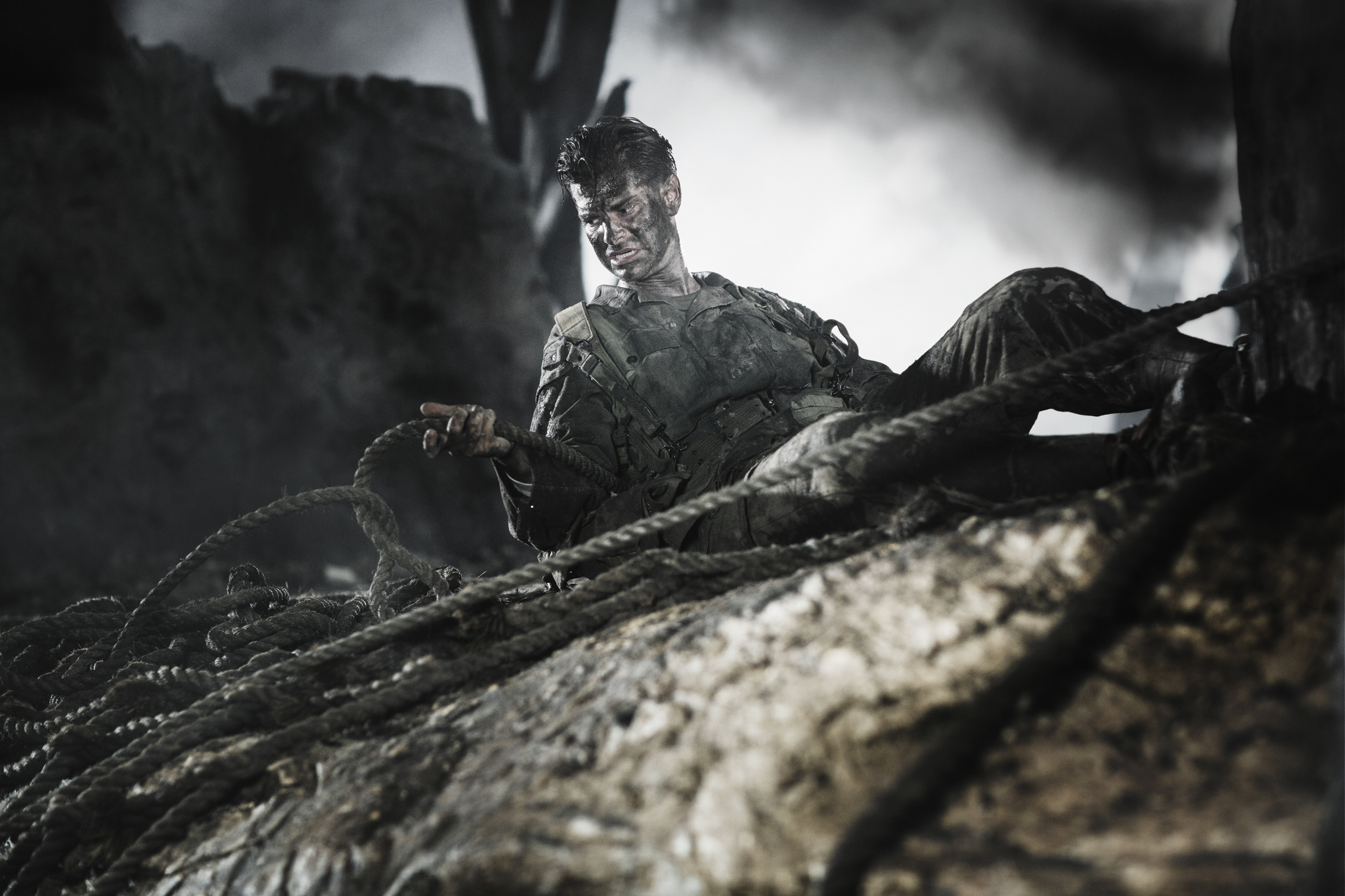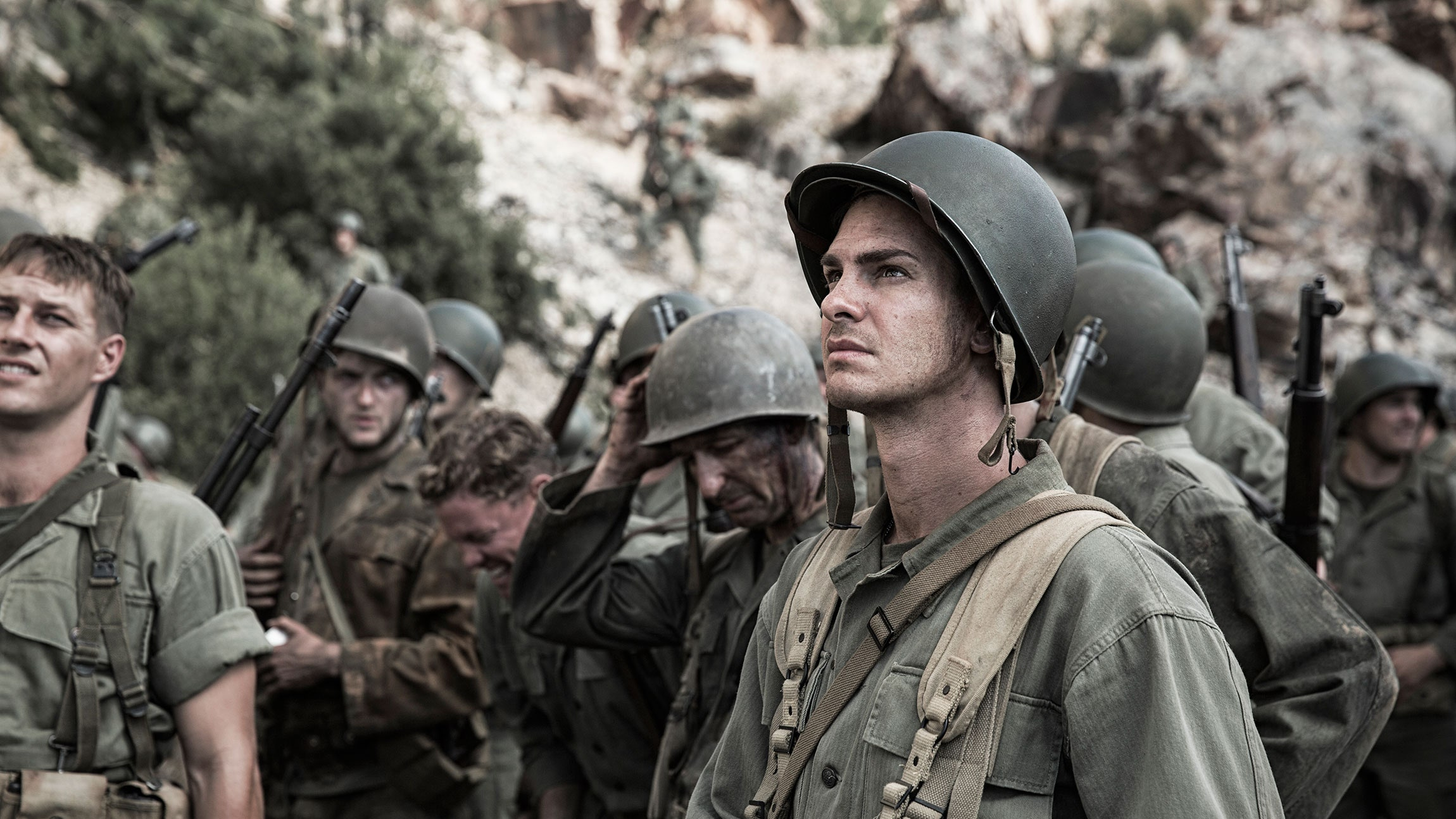An impressive war biopic about a heroic American medic who participated in the assault on Okinawa.
A young provincial worker, Desmond Doss (Andrew Garfield), practices Seventh-day Adventism and rejects violence. His faith forbids him from even touching a weapon. But at the height of World War II, Desmond decides he cannot sit in the rear while other young men from his town are fighting. Therefore, he voluntarily enlists in the army, and he is promised that he will become a field medic who does not need to carry weapons. However, the guy’s commanders insist that every soldier must learn to shoot, even if his military job is to save the wounded, not kill the Japanese. Desmond has a lot to endure before he is sent to Okinawa, where he is given the opportunity to show what he is worth on the battlefield.

The longer Hollywood exists, the less inclined it is to make fervently religious Christians with a Bible in their heart and a prayer on their lips the main positive characters. Hollywood knows that such characters annoy many people both in America and in the world, and therefore try not to lose the audience even before they have tasted the movie. But since zealous Christians exist and they want to watch movies about themselves, an almost parallel fundamentalist cinema has developed in America, where there are its heroes, its hits, its favorite stories.

Mel Gibson was offered to direct “Hacksaw Ridge” shortly after the release of “The Passion of the Christ.” He turned down the project twice before deciding to take it on.
In 2004, Mel Gibson became the hero of Christian cinema. His biblical drama “The Passion of the Christ” was aimed at a fundamentalist audience, and Gibson involved influential pastors and large church communities in the film’s advertising. As a result, the film grossed more than $600 million, making “The Passion” the highest-grossing film not in English (recall that the film was shot in authentic dialects of biblical times).

Despite this colossal success, Gibson did not develop it then. This year, however, he again released, if not a fundamentalist, then clearly a Christian film, primarily aimed at a church audience.
The Story of Desmond Doss
Of course, “Hacksaw Ridge” is the story of a war hero, not a biblical character or a famous priest. However, the unwavering faith of Desmond Doss (a real person awarded the highest military award in the United States) is of paramount importance to the narrative. First, a modest but determined young man defends his right to serve his country without taking up a rifle, and no bullying from colleagues and commanders can break him. Although he is overcome by doubts and temptations, the hero stands his ground.
When Desmond finds himself on the battlefield, prayer supports him during an amazing feat, which we will not describe in detail in order not to spoil the surprise. Doss does not preach his faith and even prays often to himself, but his actions speak louder than words. And the essence of his feat is in saving lives, and not in the usual heroic murder in war. You can agree or disagree with Desmond’s philosophy - by the way, the picture offers convincing and sound arguments in favor of why a field medic should be able to shoot - but it is impossible to deny the spiritual strength and incredible courage of the guy, humanely and charmingly played by Andrew Garfield, the former Spider-Man.

The picture was completely filmed in Mel Gibson’s native Australia. The battle scenes were filmed in the vicinity of Sydney.
A Gruesome Depiction of War
The first part of the picture is standard for this kind of film, and running under the shouts of a sergeant from the training camp, night beatings, cleaning toilets and other delights of preparation for war are not particularly exciting. Just like the standard pictures from the guy’s personal life (the hero has a cute girl and an alcoholic father). But when Desmond and his company find themselves on Okinawa and begin to storm an impregnable mountain range, viewers understand why “Hacksaw Ridge” received high marks in the West.
Remember the famous landing scene in Normandy in “Saving Private Ryan”, which is so strong that it crushes all subsequent narration? Mel Gibson filmed an even more terrible and merciless war - a real meat grinder in which Americans and Japanese grind each other with bullets, grenades, flamethrowers, bayonets, knives and even bare hands. They are fighting for a lifeless mountain, but it is of strategic importance, and this is enough to literally bury each other with corpses day after day. “War is hell” - there are few pictures that so clearly and bloodily convey this idea to viewers.
It would seem that such battles should burn out everything human from people, turn their souls into smoldering skeletons like the one that smolders in the head of Doss Sr., who lost his best friends during the First World War and never reconciled with the loss. But Desmond remains human, and this is his main, most incredible achievement. Just as Gibson’s main achievement as a director is how masterfully he juxtaposes the nightmare of war with its pathos, madness with nobility, cruelty with sincerity and notes of humor, internal experiences with external trials. “Hacksaw Ridge” does not revolutionize the military biopic, but it fills familiar genre forms with powerful content. And it reminds us that great heroes fought not only in the Red Army. Although, of course, we had more of them, and they, as a rule, defended their land, and did not storm someone else’s.